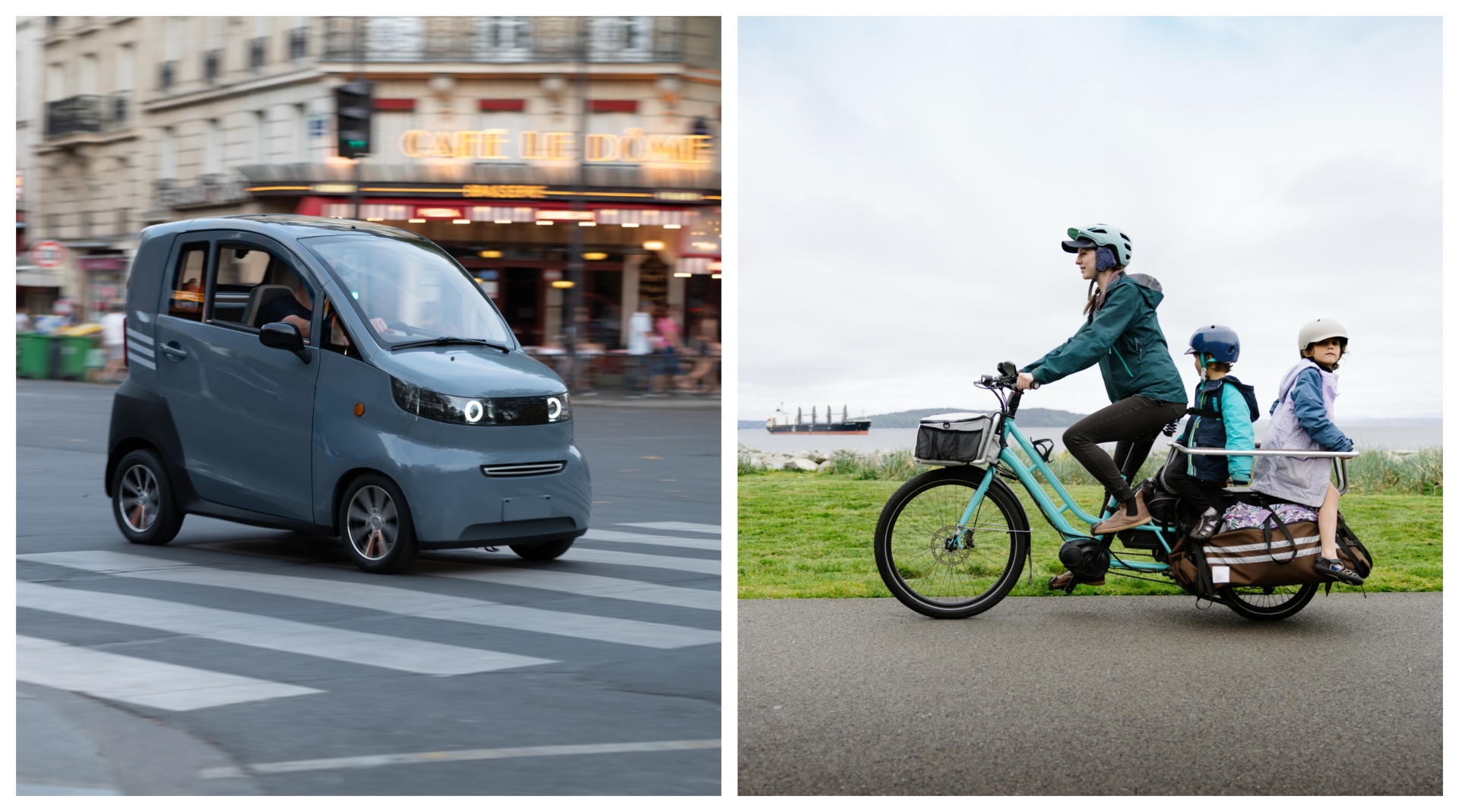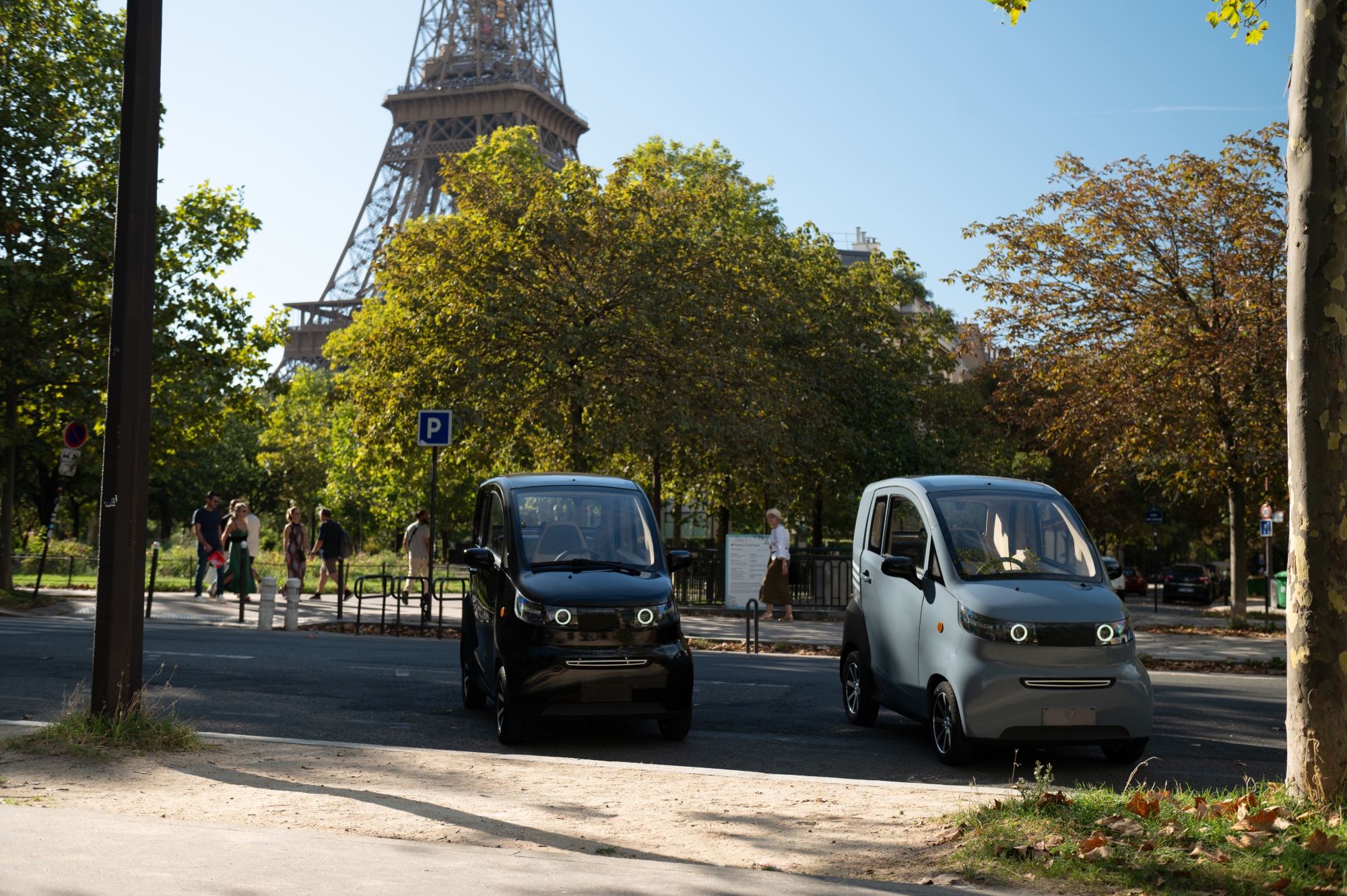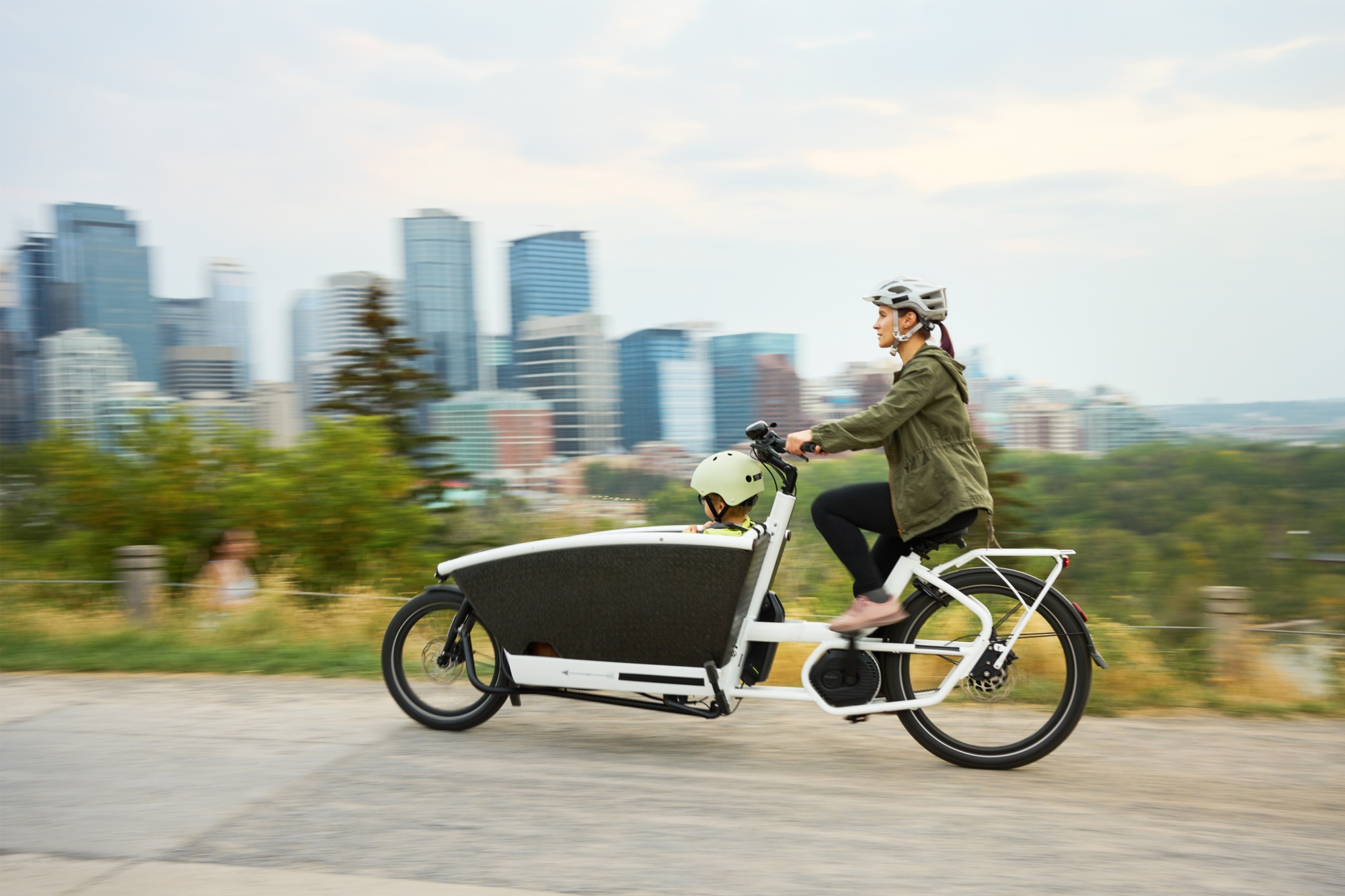
The electric Dogood Zero has a range of 50 miles. It’s designed to help reduce congestion in our towns and cities and to offer a more sustainable way for us to get about - and all for under £6,000, that’s just £500 more than the Specialized Turbo Porto e-bike, unveiled by the US brand earlier this month.
The Dogood Zero, however, is not an e-bike. It’s a quadricycle.

A quadricycle, or Low Speed Vehicle in the US, is a mini car. It has a top speed of 28 mph and can be driven in the UK using an AM moped license. It can’t be used on motorways or high-speed expressways but is good to go on regular roads, although this is restricted in the US to those with speed limits of 35mph and under. Like an e-bike it’s easy to park given its small dimensions - the Zero is 2.5 metres long and 1.2 metres wide. But the Zero also has room for two people plus the shopping. It has a heater. It has a roof.
Should the electric bike be worried?
Given that typically electric cargo bikes, the e-bike that is the closest in carrying capacity to a quadricycle, cost in the region of £4-7k, the answer might be ‘yes’.
Removing the ‘weather’ barrier
Like any bicycle, an e-bike is susceptible to weather. Or at least the users dislike of riding in the rain, the wind or the cold. A commute to work or a short trip to the shops by bike is a vastly different experience in the howling wind or during a heavy downpour. Not only does the rider get wet but the bike too. Waterproof clothing must be donned. Pannier bags need to be fastened tightly. Patience in the face of road spray is required.
A quadricycle negates these issues. For the hardened cyclist, well-prepared and experienced at riding in adverse conditions, the weather is unlikely to stop their good work. But for those wanting to change their habits, to commit to more sustainable journeys, but who aren’t already regular bike users, could it be a deal breaker?
Both an electric cargo bike and a quadricycle are significant investments. Trek’s Fetch+ 4 bike features a large cargo box that can carry up to 80kg and costs £6,475. Citroen’s Ami carries two passengers plus space for the shopping and retails at £8,495. If you’re already committed to two-wheels then the saving is merely an added bonus. But if your only commitment is to ditch the car for regular short journeys, then the convenience of a quadricycle could tip the balance.
Selling fast
The Ami has already sold 40,000 units in the UK since its launch in 2020. I asked Rob Clark, Head of Product at Citroën, about its appeal as an alternative form of transport.
“Ami is designed for those driving mainly in the city. Its compact dimensions make it suitable for navigating busy city streets, and being a battery electric vehicle means it is exempt from congestion charges or penalties applied in clean air zones,” he said.

“Customers choosing Ami or other quadricycles may be down-sizing from cars, selecting them in place of public transport, or switching from solutions such as mopeds and electric bikes. The benefit of Ami is that it can seat two people, is weather proof and, due to the metal frame and seat belts, provides additional protection”.
Still stuck in traffic
But while quadricycles, as a zero emission vehicle, can certainly be viewed as part of a more sustainable approach to transport, are they really competition for the electric bike? Sam Jones, a cycling advocacy expert, doesn’t believe so.
“A quadricycle, despite the name, is essentially a micro-car and requires no physical effort from the driver unlike an e-bike. You also require a license, registration, insurance - all things which aren’t necessary for an e-bike”, he says; whilst third party liability insurance is a good idea for cyclists, it’s not a legal requirement.

“You also can’t use them in cycle lanes, which you can with all e-bikes, which negates some of their (quadricycle) convenience in an urban environment, where you’d be half the size of regular vehicles but still stuck with them in traffic. An e-bike could use existing and future cycling infrastructure and not have that problem,” says Jones.

Utilise available accessories - many electric cargo bikes come with a host of add-ons, designed to make it as versatile as possible. If you’re planning on using a cargo box to carry your shopping, there’s a good chance there’s a waterproof cover for it. Likewise, if you’re buying an electric cargo bike for the school run you can invest in a weather-protected compartment, such as Tern’s Clubhouse Fort, to keep the kids dry.
Carry waterproof clothing - the beauty of many of the best cycling waterproof trousers and cycling jackets is that they pack up really small. Being easily stowable means you never need to get caught out by the rain. Just store the waterproof gear in a pannier ready for when the weather takes a turn for the worse.
Fit fenders - fortunately many electric bikes come fitted with fenders as standard. However, if yours doesn’t, then equipping it with a full-coverage set will go along way to keeping you and your bike dry. The latter typically helps with lowering the amount of cleaning and maintenance you’ll likely need to do.
Plan your route - choosing a route that takes in as many cycle lanes as possible can help you to stay a little drier. Sharing the roads with cars, vans and buses makes you susceptible to road spray, whereas designated cycle paths should help you avoid it. While they can’t protect you from the elements per se, they should at least make the experience of riding in the wet more pleasant.
The combination of a quadricyle’s smaller size and slower speed could be seen to help to make our roads safer for the most vulnerable, namely cyclists and pedestrians. Whilst Jones agrees with this premise, he argues that changing the size of the car won’t solve the problem.
“What will, however, is giving people more choice on how they travel, by making public transport, walking and cycling more attractive than driving the one mile to the shops,” he says “All round slower speeds and improved cycling and walking infrastructure will make the roads and our street spaces more attractive.”
“I wouldn’t want to dismiss quadricycles out of hand, as there’s clear scope to look at micro-mobility solutions,” he continues, “but governments and local authorities already have three tried and tested means for people to travel around sustainably: public transport, cycling and walking and should be doing more to make these attractive choices rather than locking us all into a future where we feel we need to drive to get anywhere.”
Yet another drawback of the quadricycle is that it doesn’t require the user to pedal. Comparatively, cycling is deemed so beneficial to health that NHS GPs in the UK now even prescribe it as a measure to reduce the burden on the healthcare system.
An interim solution
Having lived in both London and New York, where traffic is heavy, congested and often travels at alarmingly slow speeds - the average is less than 5mph in midtown Manhattan - I’m still convinced that the quadricycle does have a part to play - at least in the interim.
Visit any number of European cities and Jones’ vision of improved cycling and walking infrastructure is there for all to see. But the streets I walked and cycled on regularly in the two aforementioned cities felt like lightyears away from those I’ve enjoyed in Ghent and Utrecht.
While the future of any town or city should prioritise cycling and walking, replacing even a fraction of London or New York’s cars with quadricycles would, in the short term, feel like progress. Less noise, less pollution, less menace for those on bike and foot.
However, they go no way to solving the inherent car dependency that is built into our road systems, rather, they further lock us into the street design that we already have. The lack of user input on the pedals also means that they fail to tick the ‘active travel’ box, which is well documented to reduce the burden sedentary lifestyles place on health systems.
The quadricycle represents a ‘halfway house’, an interim solution which is not as harmful to our cities or the planet as full fat SUVs. However, perhaps the major drawback is hidden within one of the perceived benefits: you won’t be able to feel the wind in your hair.







